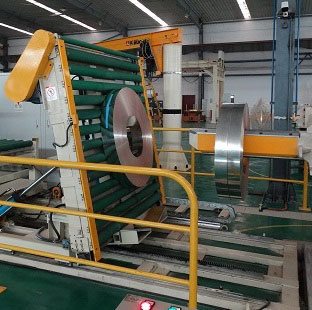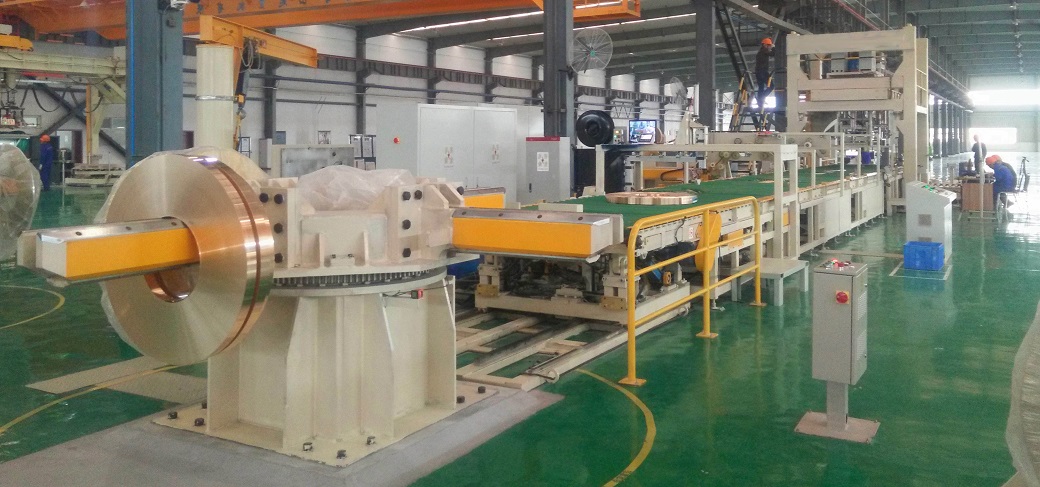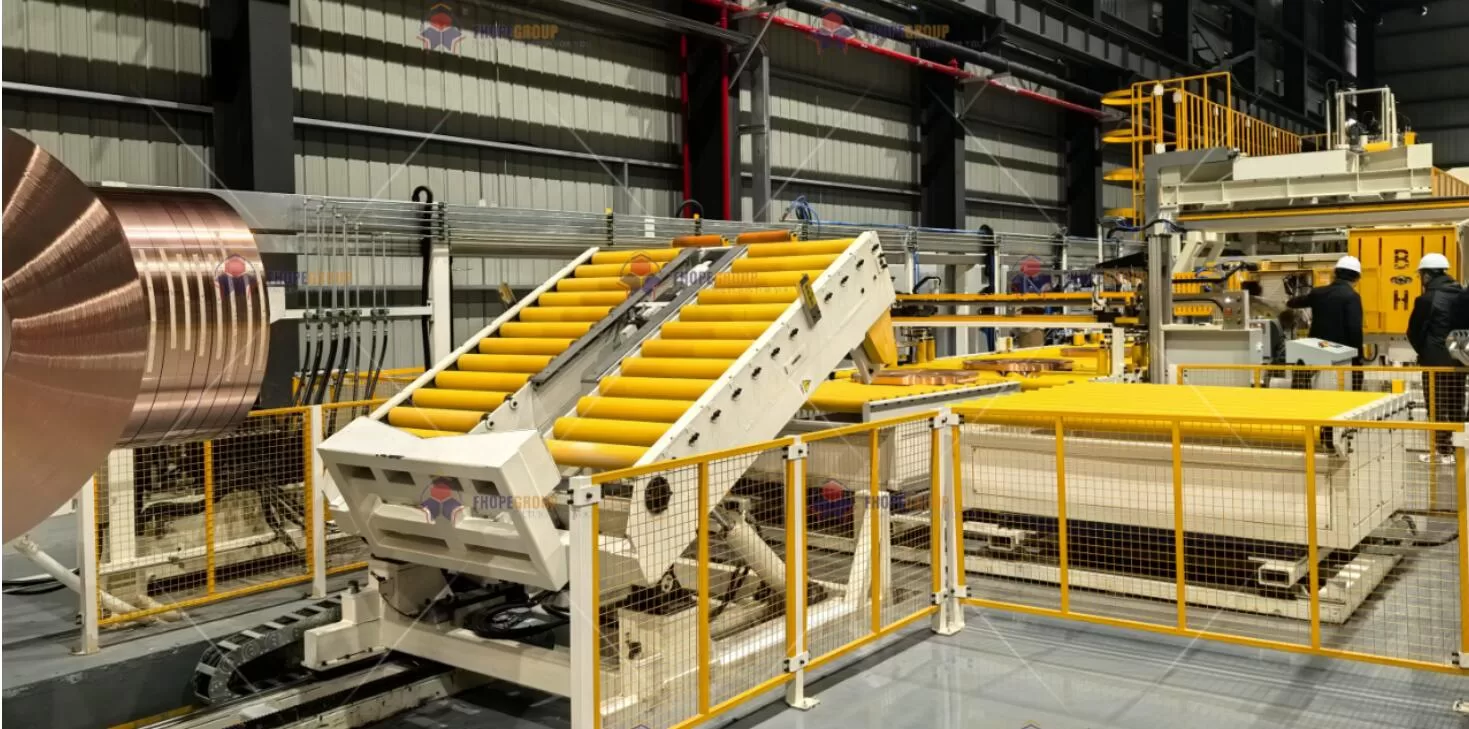How Can Your Technicians Troubleshoot Common Coil Packing Issues to Avoid Costly Downtime?
Your production line stops. A red light is flashing on the coil packing machine. Every minute of downtime costs you money and risks delaying crucial shipments. Your technicians are scrambling, checking manuals, but the problem is not obvious. You feel the pressure mounting from every direction. Is this a simple fix or a major breakdown that will ruin your production schedule? The uncertainty is stressful and incredibly expensive. But what if your team had a clear, systematic way to diagnose and fix the most common issues in minutes, not hours? I have spent my life in this industry, and I have learned that a methodical approach is everything. It is the key to control.
To avoid downtime, technicians can troubleshoot common coil packing issues by systematically checking three key areas. First, they must verify all electrical connections and sensor alignments. Second, they should inspect the mechanical systems for material jams or misaligned parts. Third, they need to review the PLC for specific error codes and perform a basic software reset if necessary. This structured approach quickly isolates the root cause of the problem.

This process sounds simple on the surface, but each of these areas has its own details and challenges. The difference between a five-minute fix and a five-hour headache is knowing exactly what to look for. I have worked with engineers and technicians from all over the world. I have noticed that the most effective ones, like some sharp technicians I met from Russia, all share one thing: a disciplined, step-by-step troubleshooting process. Let's break down exactly how they tackle these problems. This is the knowledge that turns a good technician into a great one and keeps your factory floor productive and profitable.
What's the First Step When an Electrical or Sensor Fault Occurs?
The machine stops, and the control panel displays a generic "Sensor Fault" error. This is a common problem for any factory manager. The error could be caused by anything from a loose wire to a completely failed component. Your technician starts randomly checking different sensors, wasting valuable time. Meanwhile, your production target for the day is slipping further and further away. You start calculating the cost of this single stoppage, and the number is not pretty. The solution is not random checks. It is a logical sequence of actions. The first step should always be the simplest and most common one: visual inspection and cleaning.
When an electrical or sensor fault occurs, the first step is to perform a systematic visual check. Technicians should start by carefully cleaning the sensor eye, ensuring it is completely free from the dust, grease, or debris that accumulates in a busy factory. Then, they must verify the sensor's physical alignment to make sure it has not been bumped or vibrated out of position. Finally, they should check for loose cable connections or any visible damage to the wires before ever moving on to software diagnostics.

The "Look, Touch, Wiggle" Test
I have always trained my technicians on a simple principle I call the "Look, Touch, Wiggle" test. It is a non-technical method that solves a surprising number of technical problems. First, Look. Look at the sensor and its surroundings. Is there dirt on the lens? Is the reflector misaligned? Is the cable frayed or pinched? I remember a time at my old factory when a simple piece of clear plastic wrap, blown from a trash can, blocked a sensor. It cost us two hours of production before someone finally saw it. After that day, I made "Clean all sensors" the first step in every troubleshooting guide.
Next, Touch. Is the sensor hot? Is it vibrating excessively? An overheated sensor is often a sign of an impending electrical failure. Finally, Wiggle. Gently wiggle the connector and the cable. Many sensor faults are caused by a connection that has loosened over time due to machine vibrations. If the machine's status light flickers when you wiggle the cable, you have found your problem. This simple, physical interaction with the machine can often give you more information than a complex diagnostic tool.
Understanding Sensor Types and Common Failures
Not all sensors are the same. A modern coil packing line uses several different types, and knowing the basics helps in troubleshooting. Your technicians do not need to be electrical engineers, but they should understand what each sensor does.
| Sensor Type | How It Works | Common Failure Point | Quick Fix |
|---|---|---|---|
| Photoelectric | Uses a beam of light to detect an object. | Lens becomes dirty; Reflector is knocked out of alignment. | Clean the lens with a soft cloth; Realign the reflector. |
| Inductive Proximity | Creates a magnetic field to detect metal objects. | Does not detect non-metal objects; False signals from nearby metal. | Ensure it is detecting the correct part; Check for metal shavings. |
| Limit Switch | A physical arm is pushed to trigger a switch. | The arm gets stuck, bent, or broken. | Check for physical obstruction; Ensure the arm moves freely. |
Understanding these basic differences helps a technician think logically. If a photoelectric sensor is failing, the first thought should be about cleanliness and alignment. If a limit switch is failing, the first thought should be about physical damage or obstruction. This targeted thinking saves immense amounts of time.
How Do You Effectively Prevent and Clear Mechanical Jams?
The packing film suddenly tears during a wrapping cycle. The wrapping shuttle grinds to a halt, tangled in a mess of plastic. The machine is stuck with a half-wrapped coil on the line. This is a scene I have witnessed too many times. Clearing the jam is often a difficult and potentially unsafe task for your workers. Even worse, if it keeps happening, it points to a deeper problem with the machine's setup, maintenance, or the materials you are using. You are losing valuable production time, and you are also wasting expensive packing material with every failed cycle. Prevention is always better than reaction. Preventing jams requires a solid understanding of the three main causes: material tension, roller alignment, and equipment maintenance.
To effectively prevent and clear mechanical jams, first ensure the packing material roll is loaded correctly and that the film tension is set according to the manufacturer's specifications for that specific material. You must regularly inspect and clean all guide rollers to ensure they are properly aligned and can rotate smoothly. If a jam does occur, it is critical to always follow the proper lockout/tagout safety procedure to de-energize the machine before any worker attempts to manually clear the obstruction.

Mastering Film Tension Control
Film tension is the most common culprit behind mechanical jams. If the tension is too high, the film will stretch too thin and tear easily, especially around the sharp corners of a steel coil. If the tension is too low, the film will be loose and can get caught in the rollers or the wrapping shuttle. The right tension is a delicate balance. It often changes based on the type, thickness, and quality of the packing film you are using. I always advise clients to create a logbook. Every time you start a new batch of film, spend a few minutes finding the optimal tension setting. Record that setting in the logbook next to the film’s product number. This creates a quick reference guide for your operators and eliminates guesswork. This simple habit can dramatically reduce film-related jams.
The Importance of Roller Maintenance
The rollers that guide the packing film from the roll to the coil are critical. They must be perfectly clean and spin freely. Over time, small amounts of adhesive from the film, dust, and grease can build up on these rollers. This buildup creates a rough surface that can snag and tear the film. It also can cause the roller to stop spinning freely, which creates drag and increases tension. Your maintenance team should have a simple daily checklist: wipe down all guide rollers and manually spin each one to ensure it moves without resistance. A client of mine, a steel processor just like you, was having constant film tearing issues. They blamed the machine. I flew to their factory and immediately noticed one of the guide rollers had a tiny, almost invisible burr on its surface from being hit by something. This tiny sharp edge was shredding the film. We polished the roller smooth, and the problem vanished. It is about understanding the whole system, not just blaming the big machine.
| Symptom | Possible Cause | Solution |
|---|---|---|
| Film tears repeatedly | Tension is too high; Sharp edge on a roller or guide. | Reduce tension setting; Inspect and polish or replace the part. |
| Film wraps loosely | Tension is too low; Brake on the film roll is not working. | Increase tension setting; Check and repair the film roll brake. |
| Shuttle gets jammed | Loose film caught in the mechanism; Misaligned shuttle ring. | Clear obstruction (safely!); Check shuttle alignment and bearings. |
How Can On-Site Staff Handle Basic PLC or Software Errors?
The machine suddenly freezes. The touch screen is unresponsive, or it is showing a cryptic error code that no one understands. Your first instinct might be to call for expensive, specialist support from the manufacturer. But that support could take hours, or even days, to arrive. While you wait, your entire packing operation is dead in the water. You feel powerless, and the production losses pile up. The reality is that many software-related issues are surprisingly simple to resolve. You can empower your on-site team with a basic troubleshooting protocol for the PLC. This can save you massive amounts of time, money, and frustration.
On-site staff can handle basic PLC or software errors by following a tiered approach. First, always try a simple HMI (Human-Machine Interface) screen reset or by navigating back to the main menu. If that fails to clear the issue, identify the specific error code displayed on the screen and consult the machine's manual for its meaning and suggested actions. As a final step before calling for external support, perform a controlled power cycle of the machine by turning it off at the main electrical cabinet, waiting a full minute, and then turning it back on.

Reading and Understanding Error Codes
An error code is not a sign of failure; it is a piece of information. It is the machine telling you exactly what is wrong. Good machine design includes a clear and comprehensive error code list in the manual. I believe in making this information accessible. When I started my own factory, I insisted that our HMI screens be designed to be as helpful as possible. For example, instead of a generic code like 'E-42', our machines would display 'Error: Coil Entry Sensor Blocked'. This simple change empowers the operator. They are no longer just a button-pusher; they are a problem-solver. They know immediately where to look. Train your team to see error codes as clues. The first step is always to write down the exact code and then find its meaning in the manual.
The Difference Between a Reset and a Reboot
It is important for operators to understand the difference between a software reset and a full power-cycle reboot. A reset is usually a button on the HMI screen. It tells the PLC’s current program to go back to its starting point. This can clear minor logical glitches or sequences that have gotten "stuck." A reboot is much more comprehensive. By shutting off the main power, you are restarting the PLC itself, as well as all the drives, controllers, and other electronic components. This can solve deeper issues where a component has become unresponsive. The general rule is to always try the software reset first. If that does not work, then proceed with a full, controlled reboot.
| Error Category | Example Code | Common Meaning | First Action for Operator |
|---|---|---|---|
| Emergency Stop | E-STOP | An emergency stop button is pressed or has a fault. | Visually check all E-stop buttons on the line. |
| Drive Fault | DRV-01 | The motor controller for a specific motor has a fault. | Look at the display on the specific motor drive for a code. |
| Input/Output | I/O FAULT | A sensor or an actuator is not communicating with the PLC. | Check the connection of the sensor/actuator mentioned. |
| Safety Circuit | SFTY-GATE | A safety gate is open or its sensor is not working. | Ensure all safety gates are securely closed. |
Why is a Strong Partnership More Valuable Than Just the Machine?
You have invested hundreds of thousands of dollars in a new machine. It works well for a few months, but then a problem happens that your team cannot solve. You call the supplier, but they are slow to respond or want to charge you a fortune for support. You are left alone with a user manual and a lot of frustration. I know this experience is common. I have spoken to many factory managers like Michael who have gone through this. It creates a crisis of trust. You start to believe that all equipment suppliers only care about making the sale. The solution is to change what you are looking for. Do not just buy a machine. Invest in a partnership with someone who has been in your shoes, understands your pressures, and is committed to your success long after the installation is complete.
A strong partnership is more valuable than the machine itself because an expert partner provides ongoing guidance, deep industry knowledge, and reliable post-sale support. This ensures you not only get the right equipment for your specific needs, but also the expertise required to maximize its return on investment, improve worker safety, and solve your production bottlenecks for real, long-term growth.

From Engineer to Factory Owner: My Perspective
I did not start my career as a business owner. I started as an engineer on the factory floor, just like the people you manage. I worked my way up, learned every detail of these machines, and eventually founded my own successful packing machine factory. I have lived the pressure of meeting production targets. I know the feeling in your stomach when a key piece of equipment goes down. I have been responsible for the safety of my employees and the quality of the products we shipped. Because I have been there, my company, SHJLPACK, is built on a different philosophy. Our mission is to be a knowledge-sharing platform. We are not just selling steel and motors; we are providing a total solution built on experience.
Beyond the Transaction: Understanding Your Goals
A true partner takes the time to understand your specific challenges and goals. Are you struggling with product damage during transport? Are your worker compensation costs high because of injuries from manual handling? Is your current packing process the main bottleneck in your entire operation? A good supplier will sell you a machine. A great partner will help you solve these problems. We look at the entire process. Sometimes the solution is a new machine. Sometimes it is a modification to your existing line. Sometimes it is just better training for your team. The goal is to make your business more successful. The machine is just one tool to achieve that.
What Real ROI Looks Like
For a pragmatic manager, Return on Investment (ROI) is everything. But ROI is more than just labor cost savings. Real ROI includes the money you save from eliminating product damage and customer complaints. It includes the reduction in insurance premiums when you automate dangerous manual tasks and make your workplace safer. It includes the new business you can win because you can now offer faster delivery times. When you work with a partner who understands this, they help you build a business case for the investment that your company's leadership will understand. We work with our clients to calculate this real ROI, ensuring that the solution we provide is not an expense, but a powerful engine for growth.
Conclusion
Troubleshooting is a skill, not a mystery. By mastering these systematic checks for electrical, mechanical, and software issues, your team can conquer downtime and drive your factory’s success.





